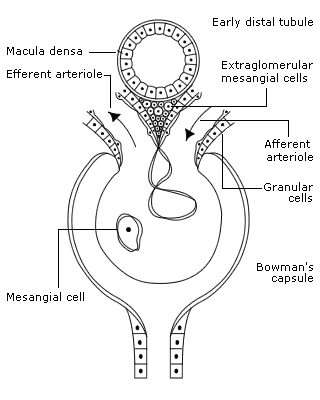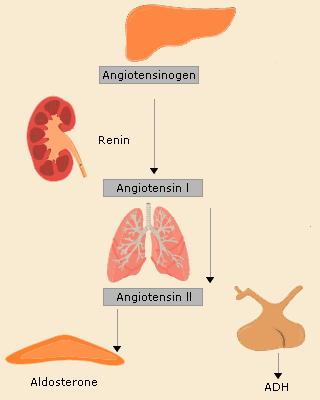Hormonal
Hormonal
Hormonal control is the slower, but longer acting system of fluid homeostasis.
Its main actions are on the:
- Circulation – to constrict the peripheral vasculature
- Kidney – to cause sodium and water retention
With a decreased circulating volume the kidneys deliver less sodium to the tubule. This is sensed by the macula densa cells of the juxtaglomerular apparatus (Fig 1), triggering the release of renin. This leads to the cascade of action shown in Fig 2.
The macula densa also regulates local glomerular blood flow to try to restore an adequate glomerular filtration rate in hypovolaemia.
In addition to the renin-angiotensin system, the hormone atrial natriuretic peptide (ANP) contributes to fluid regulation by increasing sodium and water excretion when the circulation is overfull – see receptors.


Renin activates the conversion of angiotensinogen to angiotensin I, which in turn is converted to angiotensin II by angiotensin converting enzyme (ACE) in the lung. Angiotensin II is a potent vasoconstrictor, increasing systemic vascular resistance and raising blood pressure. It also stimulates the release of:
- ADH (vasopressin) from the posterior pituitary, causing water retention, thirst and further vasoconstriction
- Aldosterone from the adrenal cortex producing increased reabsorption of sodium from the renal tubules